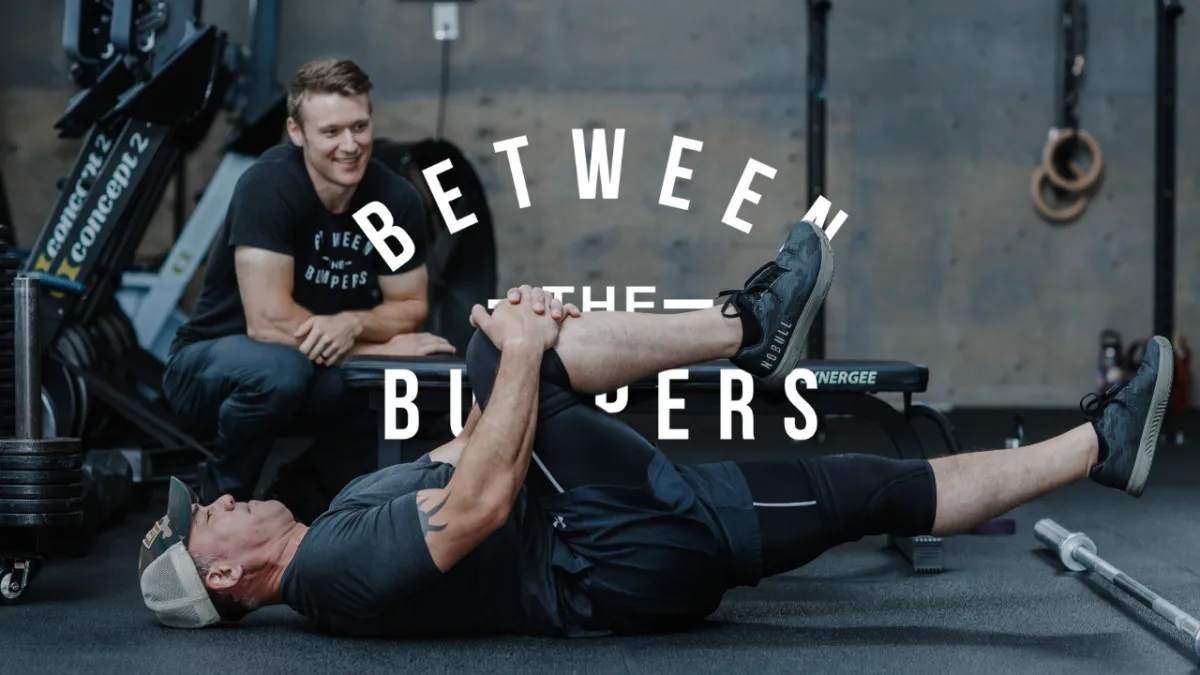BLOG
Between The Blog Posts

Scaling Exercises in Fitness Training: A Comprehensive Guide
Scaling exercises is a crucial component of fitness training that ensures all participants, regardless of their skill level or physical condition, can safely and effectively engage in workout routines. The need to scale can arise from various factors such as injuries, chronic pain, difficulties with certain movement patterns, or when the weight is too heavy to be lifted with proper technique. Additionally, fatigue can compromise an individual's ability to maintain technique throughout a workout session. On the other hand, reasons such as disliking an exercise or avoiding challenges are not valid for scaling. It's important for coaches to recognize and balance the needs and preferences of clients to promote both safety and personal growth.
1. Preserve the Stimulus
The first step in scaling is to maintain the intended stimulus of the workout. This includes preserving the targeted muscles and movement patterns. For example, if the goal is to enhance aerobic capacity, alternatives should equally challenge cardiovascular endurance without overtaxing the participant.
Example:
Knee Pain in Front Squat --> Transition to a Box Squat
2. Reduce the Intensity
Scaling the intensity involves adjustments such as lowering weights, decreasing speed, or reducing repetitions. This approach helps participants manage the workout's demands while still pushing their limits in a controlled manner.
3. Modify the Range of Motion (ROM)
Altering the range of motion is another effective scaling method. This might mean changing a full-range movement, like a deep squat, to a less demanding version, such as a half squat, which reduces joint stress while still engaging the necessary muscle groups.
Hip Pain in Thrusters --> Push Press
4. Modify Movements
If an exercise is not suitable even after adjusting intensity and ROM, replacing it with a different exercise that works the same muscle groups in a similar manner is advisable. For instance, substituting pull-ups with assisted pull-ups or lat pull-downs can cater to the same upper body muscles with less intensity.
General Categories of Movements:
Vertical Pressing (Ie. Strict Press, Push Press, Handstand Push-Up)
Horizontal Pressing (Ie: Bench Press, Push Ups, Man Makers)
Vertical Pulling (ie: Pull-Ups, Lat Pull Down, Toes To Bar)
Horizontal Pulling (ie: Bent Over Row, Lawn Mower Rows, Ring Rows)
Squatting & Lunging (ie: Back Squat, Lunges, Wall-Sits
Hinging (ie: Deadlifts, RDLs, KB Swings, Single Leg RDL)
Core Exercises (ie: Pallof Press, Dead Bugs, Plank Holds, Side Plank)
5. Preserve the Targeted Body Part
Ensure that the scaled exercise continues to focus on the intended body part. This consistency is crucial for achieving the workout’s objectives and maintaining a balanced training session.
General Body Parts:
Back & Biceps (Pulling Muscles)
Chest & Triceps (Pushing Muscles
Quads & Glutes (Squatting Muscles)
Hamstrings & Glutes (Hinging Muscles)
Abs (Anti-Extension Muscles)
Obliques (Anti-Latera Bend Muscles)
Lower Back (Anti-Flexion Muscles)
Transverse Abdominous (Anti-Rotation Muscles)
6. Similar Time to Complete
The duration of the scaled exercise should closely match that of the original. This consideration helps maintain the workout's structure and pacing, ensuring that no part of the session becomes disproportionately challenging or time-consuming.
Example:
60 Double Unders (:60 Of Work) --> Scale to an exercise that would take about :60) --> 250m Row
7. Incorporate Progressions and Regressions
Understanding when to advance a scaled exercise or revert to a simpler version is essential for continual improvement and adaptation. Coaches should regularly assess their clients' performance and readiness to progress or need to regress based on their current fitness levels and workout responses.
Example:
Regression <----> Movement <----> Progression
Dumbbell Snatch Barbell Snatch Barbell Squat Snatch
8. Review Scaling Options in SugarWOD Notes
Regularly reviewing the scaling options noted in workout tracking platform SugarWOD can provide insights into how participants are adapting to scaled exercises. These notes can help coaches tailor workouts more effectively, ensuring that each individual progresses safely and efficiently toward their fitness goals.
Conclusion:
Effective scaling is vital for accommodating diverse abilities and ensuring that all participants can benefit from a workout safely and productively. It requires a thoughtful approach from coaches, who must balance maintaining the integrity and challenge of the exercise while accommodating individual needs. By adhering to these guidelines, fitness trainers can create inclusive, adaptable, and challenging workout environments that cater to a broad range of fitness levels.
ABOUT US
We're more than just a gym — we're a catalyst for transformation in Stittsville. Embark on a journey to elevate your health and wellness with our expertly designed fitness classes, personalized coaching, and an unwavering commuSocial Iconsnity spirit.
HOURS OF OPERATION
Mon-Fri: 6am - 7pm
Sat: 9am - 11am
Sun: Closed
QUESTIONS?
Between The Bumpers Fitness
6511 Fernbank Road
Stittsville, ON K2S1B6
(613) 801-8684
Copyright ©2024 All rights reserved